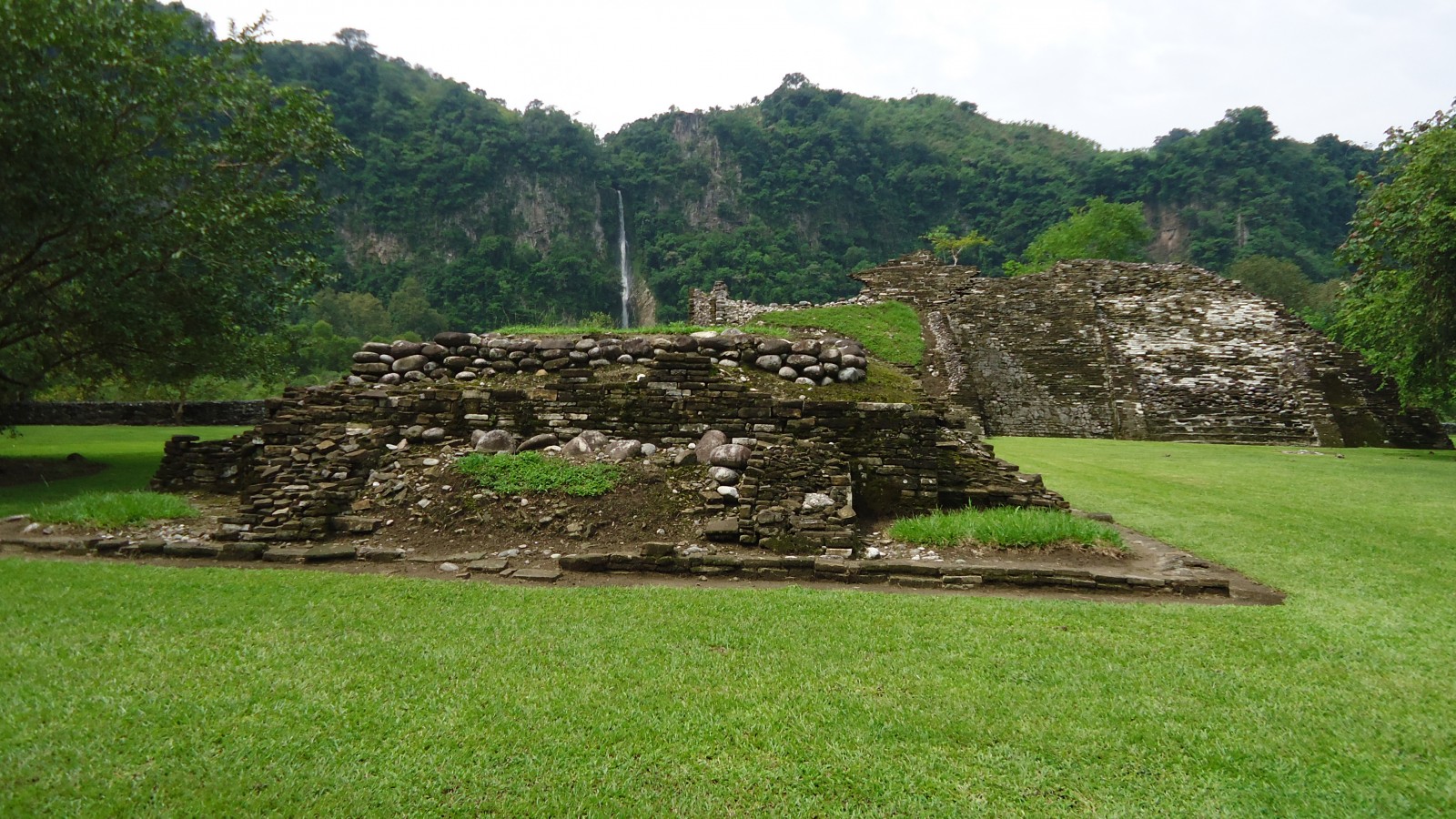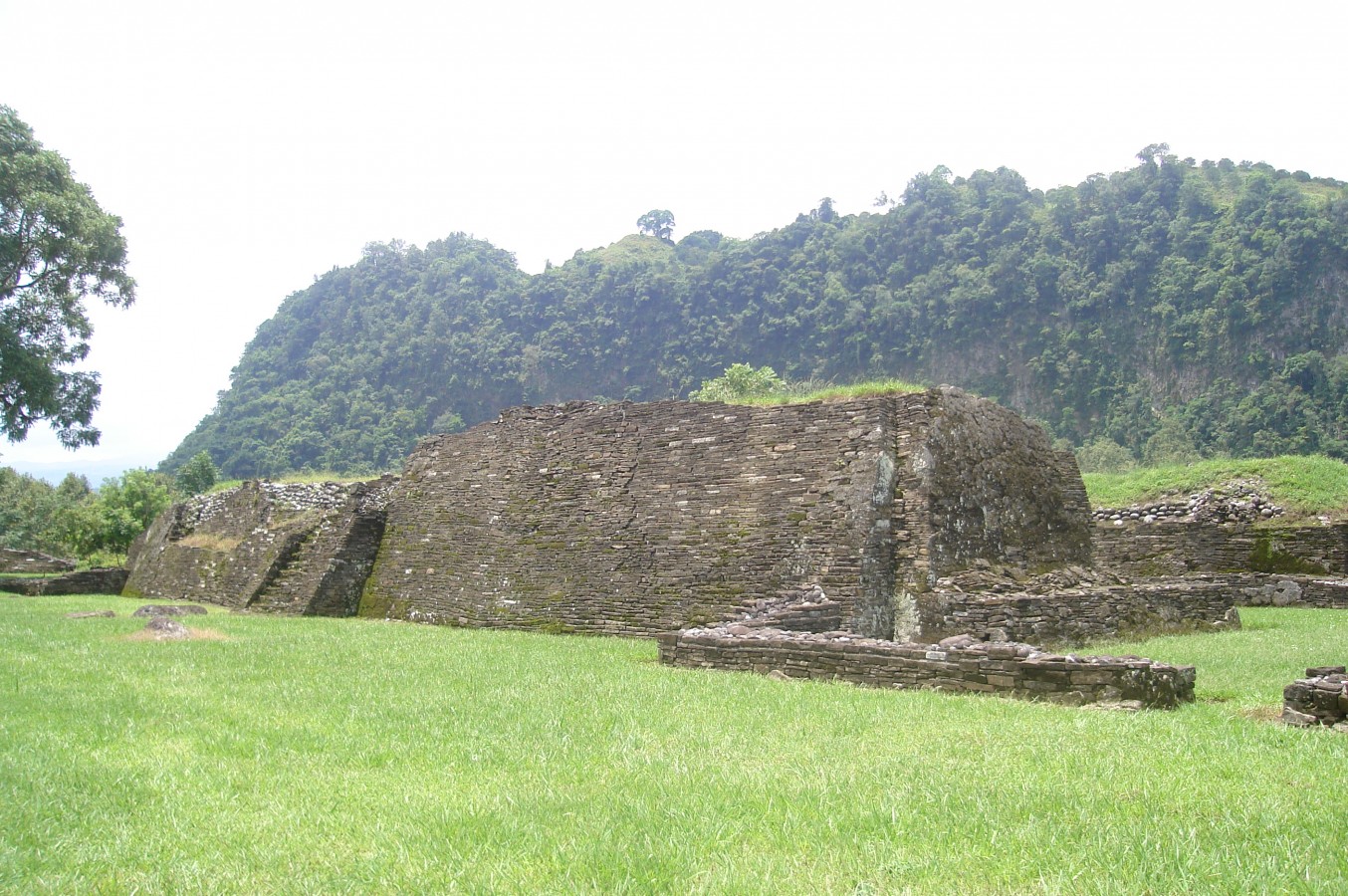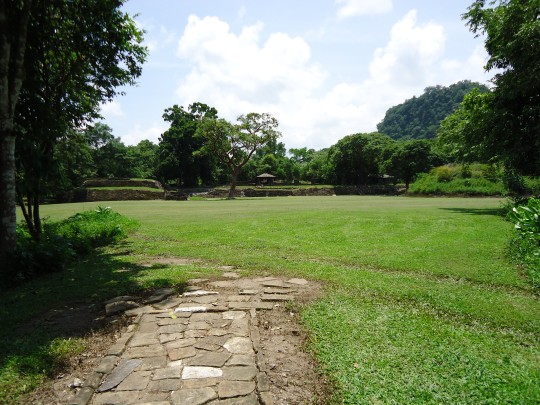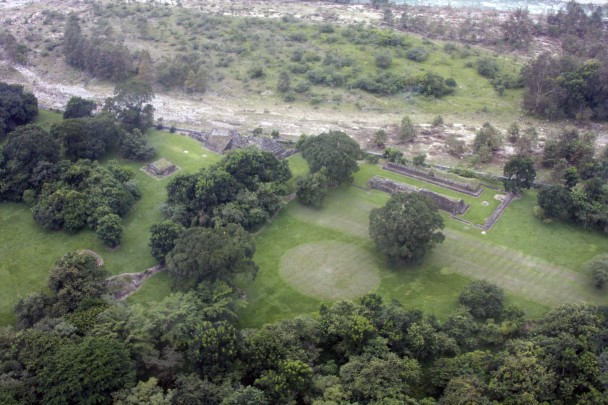Vega de la Peña
On the banks of a river, convenient for trade, remarkable urban planning and the Fretwork Temple, whose facade decorations depict the serpent of fire. The Mexica held sway over the site, who took advantage of the communications network to exact their tribute.
About the site
Like Cuajiote, this site must be interpreted in the context of the river Bobos sub-basin, in the central area of Veracruz. This region was a focus for receiving and redistributing trade goods, exploiting the communications network defined by the topology. The network was subsequently used extensively by the Mexica when they expanded towards the Gulf, turning the valley’s settlements into tribute payers for the Triple Alliance. The cultural group which developed this site displayed a blend of characteristics including Maya, Olmec, Huastec, Totonac and Toltec. Materials analysis has identified ancient links with Oaxaca and the Mayan region. In the Classic period it had ties with Teotihuacan and El Tajín, and finally with Tula and the Basin of Mexico.
Practical information
Temporarily closed
Tuesday to Sunday from 10:00 to 17:00 hrs
$80.00 pesos
Se localiza en el municipio de Atzalan, Veracruz.
From Tlapacoyan, on the road to Martínez de la Torre, take the turn for El Encanto and cross the Tomata and Bobos rivers; can also be reached through the Cuajilote site.
Services
-
+52 (229) 934 9981
-
This email address is being protected from spambots. You need JavaScript enabled to view it.
Directory
Responsable Regional
Temaschtiani Atenco
+52 (229) 934 9981 y 934 5282













